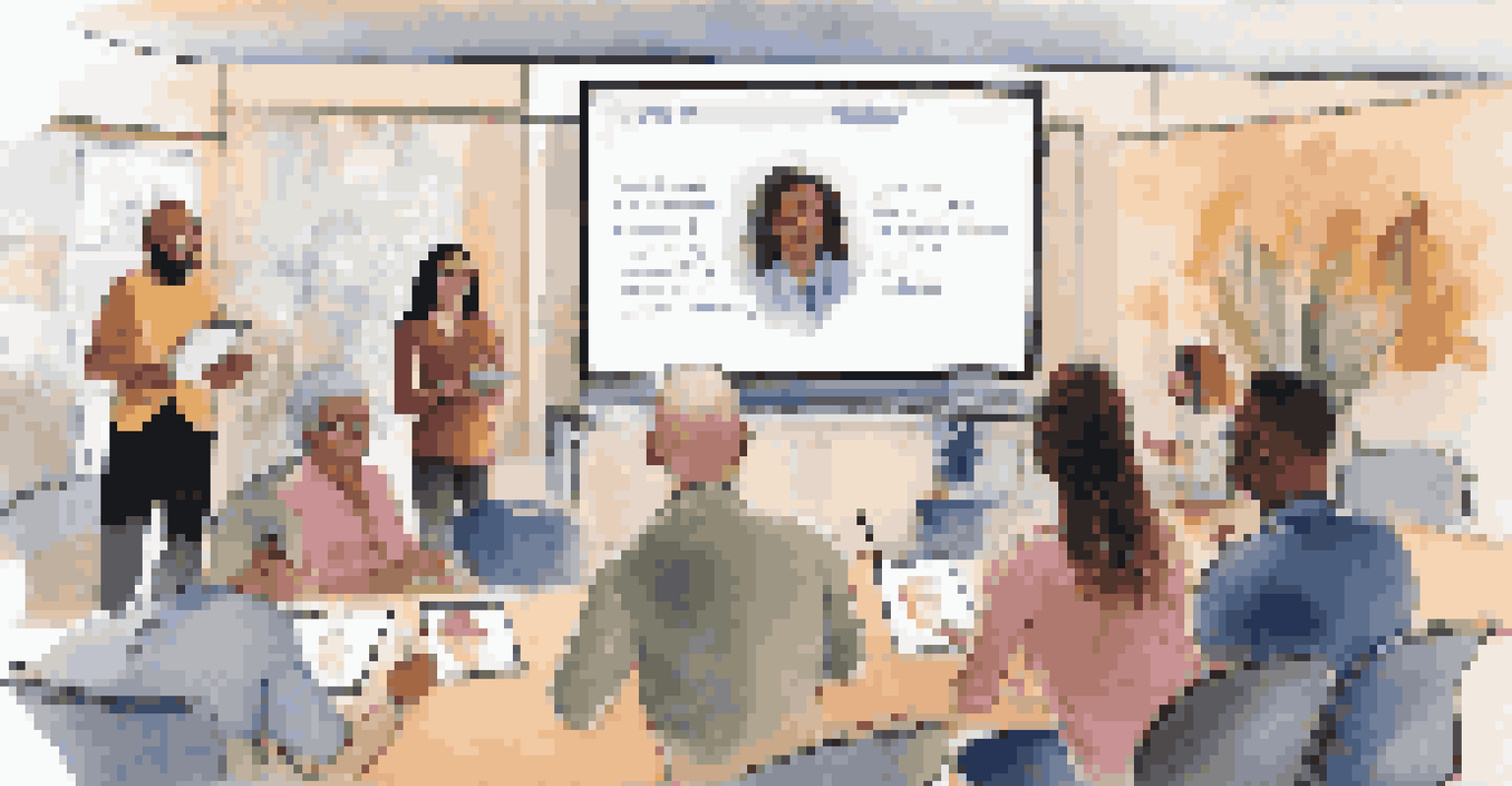Virtual Health Fairs: Connecting Communities and Resources

Understanding Virtual Health Fairs and Their Purpose
Virtual health fairs are online events designed to connect communities with health resources and information. They provide an accessible platform for individuals to learn about various health topics, meet professionals, and discover local services. In an age where digital interaction has become the norm, these fairs serve as a bridge between communities and essential health resources.
Health is a human right, not a privilege.
The primary goal of virtual health fairs is to promote awareness and education on health-related issues. By creating a space where people can gather online, these events empower participants to take control of their health journey. This is particularly important in underserved areas where access to healthcare information and providers can be limited.
Additionally, virtual health fairs often feature interactive elements such as live Q&A sessions, workshops, and webinars. These engaging formats not only make learning enjoyable but also encourage participants to ask questions and seek guidance directly from health experts. This two-way interaction fosters a sense of community, which is vital for collective health improvement.
The Rise of Virtual Events in Healthcare
The shift towards virtual events in healthcare has accelerated, especially since the pandemic. Traditional health fairs, which relied on in-person attendance, faced challenges that many organizations had to navigate. As a result, many have transitioned to online platforms, allowing them to reach a broader audience while ensuring safety and accessibility.

Virtual health fairs have proven to be effective in overcoming geographical barriers. People from different regions can join and benefit from the same resources, which was often impossible with in-person events. This inclusivity is crucial for enhancing health literacy across diverse populations.
Virtual Health Fairs Connect Communities
These online events bridge the gap between individuals and essential health resources, promoting awareness and education.
Moreover, the digital format allows for a variety of content to be shared, from videos and articles to interactive discussions. Participants can revisit recorded sessions, ensuring they don't miss out on valuable information. This flexibility enhances the overall experience and allows attendees to absorb knowledge at their own pace.
Benefits of Attending Virtual Health Fairs
Attending virtual health fairs offers numerous benefits for participants, starting with convenience. Individuals can join from the comfort of their homes, eliminating the need for travel or time away from work. This accessibility encourages more people to participate, leading to a larger pool of knowledge sharing.
The greatest wealth is health.
Another significant advantage is the variety of resources available at these events. Participants can access information on everything from nutrition and fitness to mental health and chronic disease management. This diverse array of topics ensures that everyone can find something relevant to their personal health needs.
Furthermore, virtual health fairs create opportunities for networking with healthcare professionals and other attendees. Whether connecting with a nutritionist or sharing experiences with peers, these interactions can lead to valuable relationships and support networks that continue long after the event ends.
How to Prepare for a Virtual Health Fair
Preparation is key to maximizing the benefits of attending a virtual health fair. Start by researching the event's agenda and identifying sessions that interest you. Knowing what to expect can help you prioritize your time and ensure you don't miss important topics.
It's also helpful to prepare questions in advance. Think about what health concerns you want to address or topics you'd like to learn more about. Having specific questions ready can make it easier to engage during live sessions, allowing you to get personalized advice from experts.
Accessibility Enhances Health Literacy
Virtual formats remove geographical barriers, allowing diverse populations to access valuable health information.
Lastly, make sure your technology is set up and functioning before the event. Ensure you have a reliable internet connection, and familiarize yourself with the platform being used. A little technical preparation can go a long way in creating a seamless experience.
Innovative Features of Virtual Health Fairs
Virtual health fairs often incorporate innovative features that enhance the attendee experience. For example, many platforms provide interactive booths where participants can explore resources related to specific health topics. These booths can include downloadable materials, videos, and links to local services.
Live polling and surveys during sessions are also common, allowing attendees to engage actively with the content. This real-time feedback not only keeps participants involved but also helps organizers understand what topics resonate most. Such features create a dynamic environment that encourages learning and participation.
Additionally, virtual health fairs may offer gamified elements, such as quizzes or challenges, that make the experience more enjoyable. By turning learning into a game, participants are more likely to remember the information presented and apply it to their lives.
Challenges and Considerations for Virtual Health Fairs
While virtual health fairs present many advantages, they also come with their share of challenges. One significant concern is the digital divide, where individuals without access to reliable internet or technology may be excluded from these events. It's essential for organizers to consider ways to bridge this gap and ensure inclusivity.
Another challenge is the potential for information overload. With so many resources and sessions available, participants may feel overwhelmed and unsure of where to focus their attention. Organizers can help by providing clear guidance and recommendations based on attendees' interests.
Preparing Boosts Fair Participation
Researching agendas and preparing questions in advance can significantly enhance the experience and engagement at virtual health fairs.
Lastly, maintaining engagement in a virtual setting can be tricky. Unlike in-person events, where energy can be palpable, online events may lack that same excitement. Organizers need to be creative in their approach, using engaging content and interactive features to keep participants interested and involved.
The Future of Virtual Health Fairs
As technology continues to evolve, the future of virtual health fairs looks promising. Many organizations are already exploring hybrid models, combining both virtual and in-person elements. This approach allows for broader participation while still offering the personal touch of face-to-face interactions.
Furthermore, advancements in technology will likely lead to more immersive experiences. Virtual reality (VR) and augmented reality (AR) could play significant roles in creating engaging environments that mimic real-life interactions. Imagine attending a health fair where you can walk through virtual booths and interact with 3D presentations.

Ultimately, the goal of virtual health fairs remains the same: to connect communities with valuable health resources. As these events continue to adapt and innovate, they will play an increasingly vital role in promoting health education and fostering community connections.